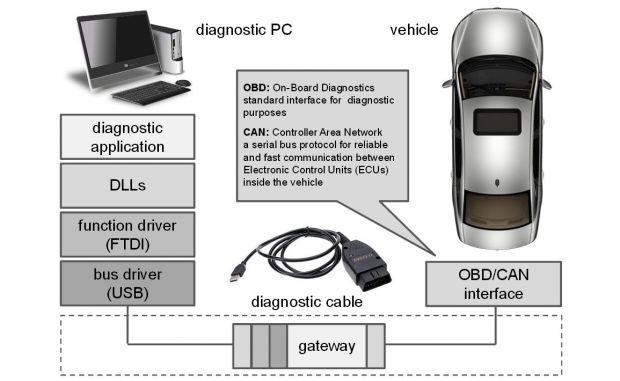This is the second article in the series about embedded devices security, started with Strengthening the Security of Embedded Devices
Embedded devices are specialized computing systems designed to perform specific tasks or functions within a larger system. Unlike general-purpose computers, embedded devices are typically integrated into other devices or systems and are dedicated to carrying out a specific set of functions. They are often characterized by their compact size, low power consumption, and optimized performance for their intended application.
No wonder that embedded devices are becoming increasingly prevalent, powering a wide range of applications such as IoT devices, industrial control systems, and automotive systems. With their growing ubiquity, ensuring the security of these embedded devices has become a critical concern. Secure booting is a fundamental security mechanism designed to protect embedded devices from unauthorized access and tampering, playing a vital role in maintaining the integrity of the system. This article explores the concept of secure booting for embedded devices and highlights its significance in enhancing overall security.
Understanding Secure Booting
Secure booting is a security feature that establishes a chain of trust during the booting process of a computer and embedded devices. It ensures that only trusted and verified software components, such as bootloader, kernel, and applications, are loaded and executed, preventing the execution of malicious or unauthorized code. The primary objective of secure booting is to guarantee the integrity and authenticity of the device’s software stack.
“Secure Boot” is also security feature included in Windows 8, 10, and 11, as well as some Linux distributions. It is designed to protect your computer from malware by verifying that a trusted authority has signed the software you are running.
We will not be addressing this type of secure boot in this article, we will focus only on embedded devices like those found in cars, IoT devices and alike.
Importance of Secure Booting for Embedded Devices
1. Protection against Malware and Unauthorized Code Execution
Secure booting prevents the execution of malware or unauthorized code during the boot process. By verifying the digital signatures and integrity of software components, it ensures that only trusted and properly signed code is executed. This prevents attackers from compromising the device by injecting malicious code or unauthorized modifications.
2. Mitigation of Firmware and Bootkit Attacks
Embedded devices are vulnerable to firmware and bootkit attacks, where an attacker gains control over the device’s firmware or boot process. Secure booting effectively mitigates such attacks by verifying the integrity of the firmware and bootloader, ensuring they have not been tampered with. It helps in detecting and preventing the execution of malicious firmware or bootkits, thereby enhancing the security of the device.
3. Prevention of Unauthorized Access and Data Breaches
Secure booting plays a crucial role in protecting embedded devices from unauthorized access and data breaches. By ensuring the integrity of the software stack, it prevents attackers from gaining unauthorized access to sensitive data or manipulating the device’s functionality. This is particularly important in critical applications such as medical devices, industrial control systems, and autonomous vehicles, where a breach can have severe consequences.
4. Safeguarding Device Integrity
Embedded devices often operate in untrusted environments, making them susceptible to physical attacks or tampering. Secure booting helps maintain the integrity of the device by verifying the authenticity of software components, even in the presence of physical access. It can detect and prevent unauthorized modifications to the bootloader or firmware, thereby protecting the device from tampering.
5. Compliance with Industry Standards and Regulations
Many industries and regulatory bodies require secure booting as a mandatory security measure for embedded devices. Adhering to these standards and regulations ensures that devices meet specific security requirements and provides assurance to customers, partners, and regulatory authorities regarding the device’s security posture.
What next?
You must first find out if secure boot is really necessary for you. How to do that? Create a threat model and identify if there are any risks related to the booting.
For example, is it possible to have an attacker preventing the first 4 topics above ?
Ask questions like these:
- is it possible that someone or something (like OTA updates) pushes untrusted code into my embedded devices?
- is it possible that my firmware will be overwritten by someone or something ?
- can someone tamper physically with my device and alter its boot process or force it to install a foreign firmware?
If you clearly have a Yes in any, then you should implement Secure Booting.
© Copyright 2023 Sorin Mustaca, All rights Reserved. Written For: Sorin Mustaca on Cybersecurity
Check www.endpoint-cybersecurity.com for seeing the consulting services we offer.
Visit www.itsecuritynews.info for latest security news in English
Besuchen Sie de.itsecuritynews.info für IT Sicherheits News auf Deutsch




2 thoughts on “Secure Booting for Embedded Devices: Safeguarding Systems from Intrusions”
Comments are closed.